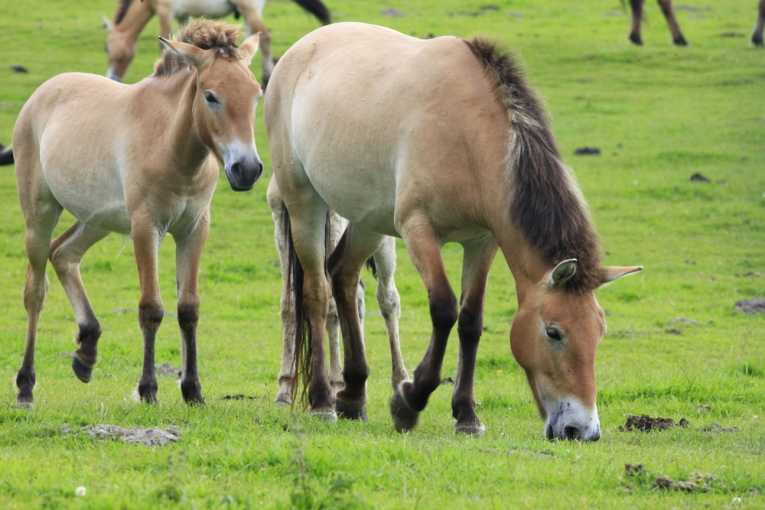Przewalski's horse represents the only physical link to ancestral horses, but after the dog, the boar and many ovines and bovines came the horse. We domesticated horses last. Perhaps we couldn't catch them earlier!
Science has advanced now to the extent that we can look back in history through the mitochondrial DNA of humans and now the rest of our fauna. Horses are such a major part of history that perhaps there are even better stories to be winkled out of the chromosomes before another new technique delivers a magic mirror to view our past.
The authors of this paper in Evolutionary Biology quote mobility, trade. life-style and of course, war, as the main effects of Equus on humanity. The eminent group from Germany, the UK and US are Sebastian Lippold, Nicholas J. Matzke, Monika Reissmann, and Michael Hofreiter. Using the whole set of mitochondrial DNA for the first time, the 17 major groups of breeds that have been recognised were associated with at least 7 breeds and geographical areas. Since cave bears and killer whales have had the advantage of this technique, their intra - and inter-specific relationships were carefully worked out. The aim here was to confirm the wide sample of extinct horse populations present during domestication and the subsequent population expansion. Sebastian Lippold et al also attempted to estimate how far back in time the gene pools can be traced. See graph:

Credit: BMC Evolutionary Biology 2011, 11:328 doi:10.1186/1471-2148-11-328
Fifty nine genomes from forty four breeds were investigated, including, naturally, our oldest friend, Przewalski. The cells were extracted from hair roots and the sequencing carried out on whole mitochondria. The required phylogenetic tree was produced with good resolution between most of the populations. Only one or two very closely related lineages were not resolved. Estimates for divergence from a common ancestor are between 93,000 years to 38,000 years ago (as shown in the graph).
The horse and wild donkey (ass) divergence took place before this and could be used to measure the horse DNA divergence. About 7,000 years ago, the population expansion that most domestic species enjoyed slightly preceded the actual domestication at 5,000 years ago The most interesting diversity figure is the huge number of lineages from wild horses that continued into the domesticated genomes (73% of the diversity of wild horses still exists in the present populations.)

This lovely stampede is thought to be Altai horses, possibly on the steppes. via Shutterstock
It is charming to look at Akhal-Teke, Altai Arab, Bashkir Curly, Icelandic horse, Kinsky horse, Kladruber, Kuznet, Liebenthaler, Rhineland Heavy Draft and Welsh Pony and wonder that these animals at least have no single maternal origin Instead they hold much of the extinct genotypes for pre-domesticated populations throughout Eurasia, including some Mongolian and Chinese varieties that remain uninvestigated.
Remaining for us is the exact geographic origin of the horse or horses. After this fascinating relationship we have had with Equus caballus, Homo sapiens always needs to know just a little bit more.










